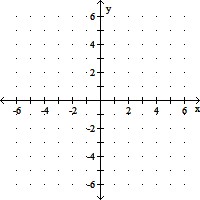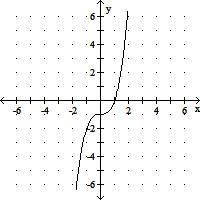Determine i) the domain of the function, ii) the range of the function, iii) the domain of the inverse, and iv) the range of the inverse.f(x) = 
A. f(x): D is all real numbers, R =  ;
;
f-1(x): D =  , R is all real numbers
, R is all real numbers
B. f(x): D =  , R =
, R =  ;
;
f-1(x): D =  , R =
, R = 
C. f(x): D is all real numbers, R is all real numbers;
f-1(x): D is all real numbers, R is all real numbers
D. f(x): D =  , R =
, R =  ;
;
f-1(x): D =  , R =
, R = 
Answer: B
You might also like to view...
Evaluate. Assume that all variables represent positive numbers. 
A. 2s
B. s
C. -s
D. 
Determine the domain and range of the relation. State whether the relation is a function or not a function. 
A. domain: {snake, cat, dog} range: {Alice, Brad, Carl} not a function B. domain: {Alice, Brad, Carl} range: {snake, cat, dog} function C. domain: {snake, cat, dog} range: {Alice, Brad, Carl} function D. domain: {Alice, Brad, Carl} range: {snake, cat, dog} not a function
Decide if the answer is reasonable or unreasonable by rounding the numbers and estimating the answer. If the answer is not reasonable, find the correct answer.401.96 ÷ 41.9 = 9.59
A. Unreasonable, should be 0.959 B. Unreasonable, should be 0.0959 C. Unreasonable, should be 95.9 D. Reasonable
Graph.y = x3 - 1
A. 
B. 
C. 
D. 